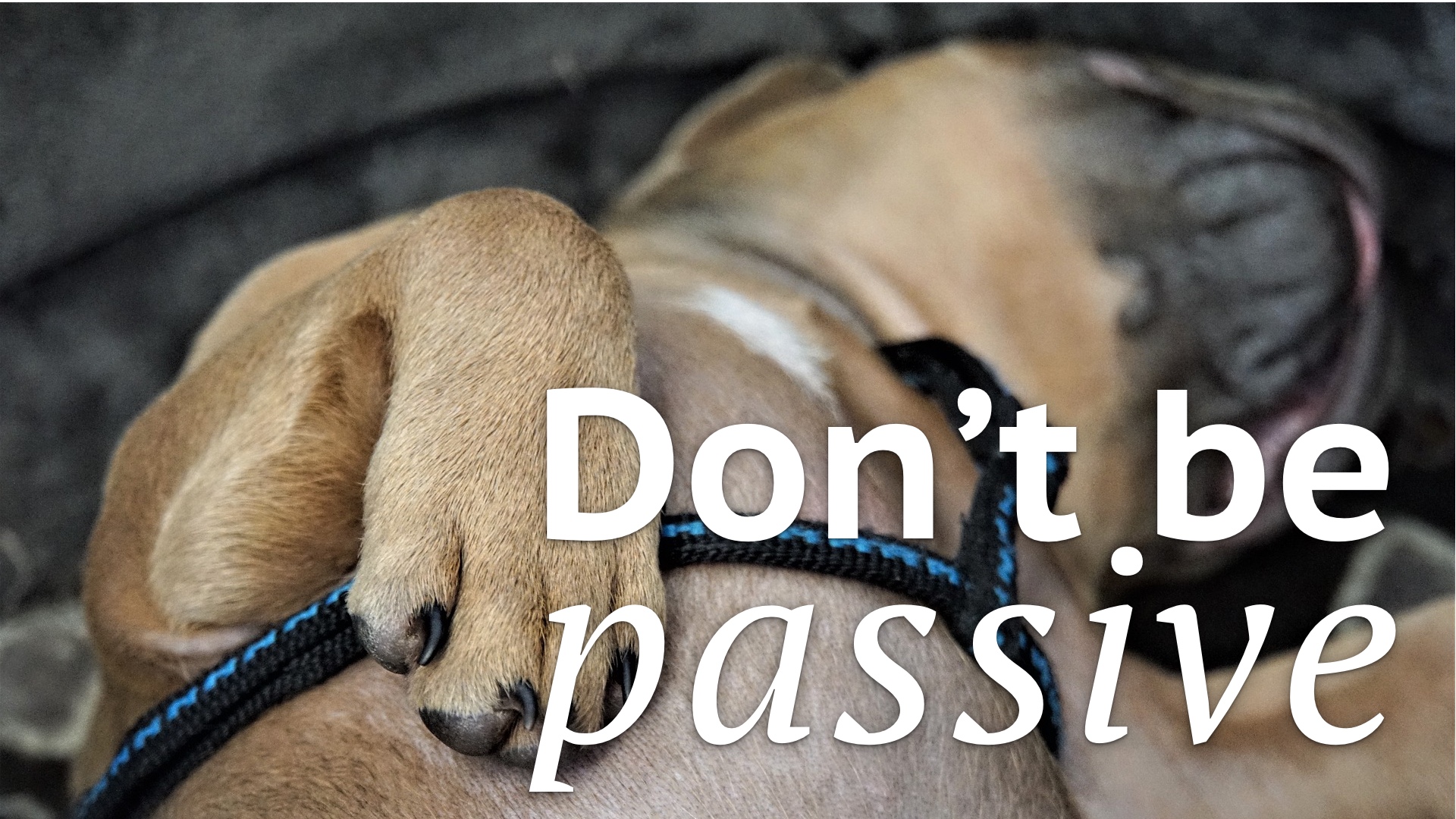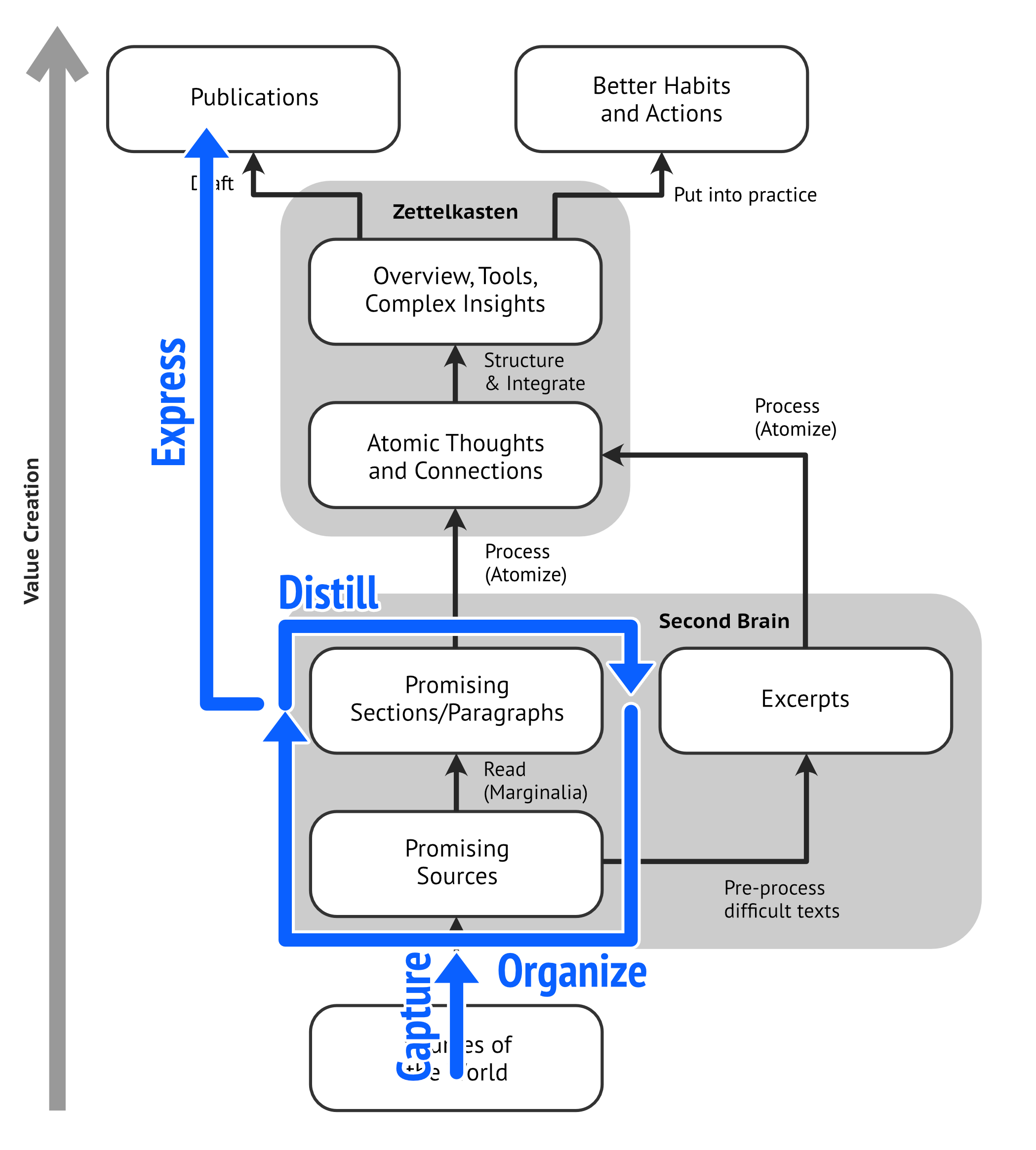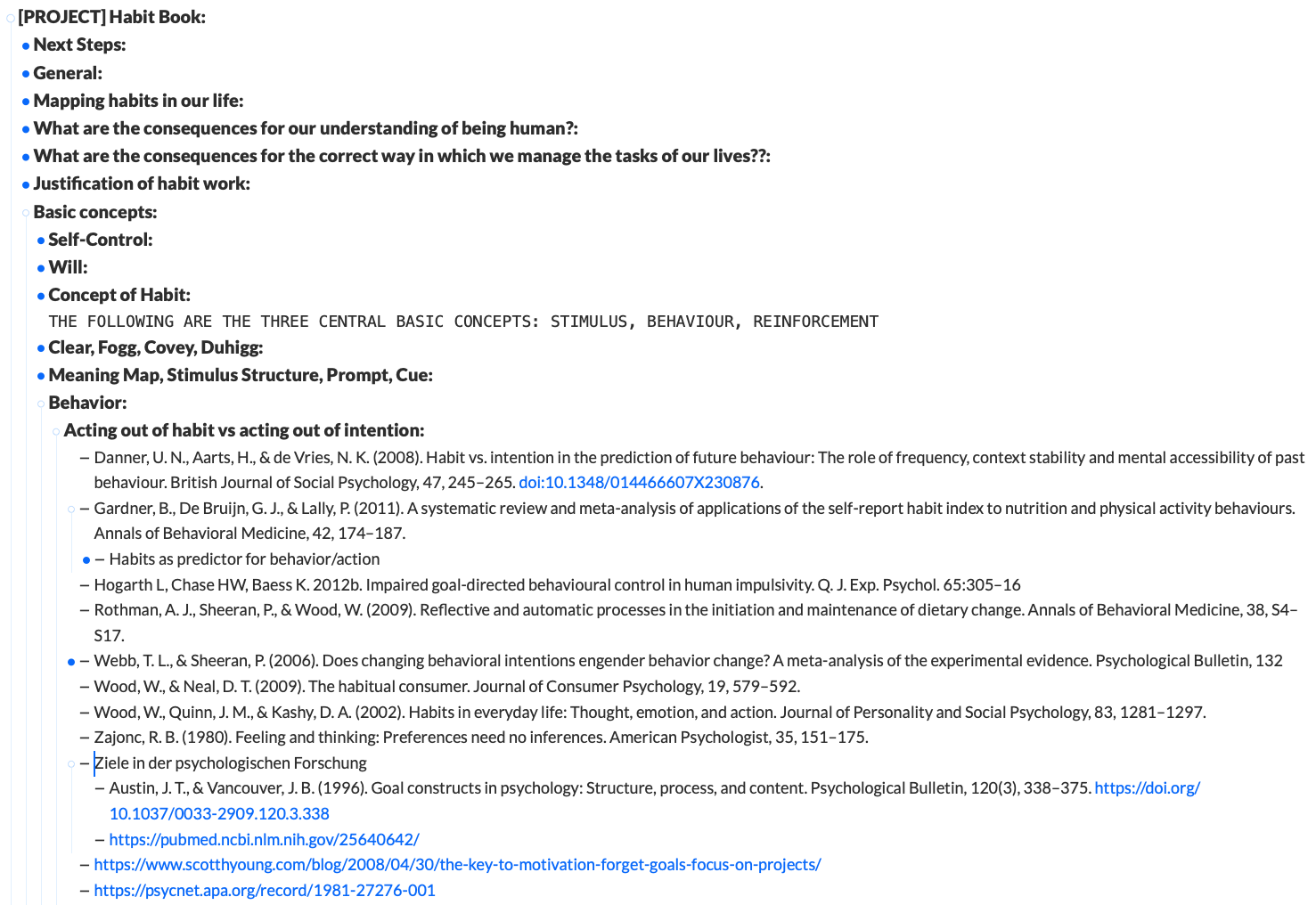Field Report #8: How I Process a Chapter of a Book
At the moment of writing this, I process the chapter “reward” from the book “Good Habits, Bad Habits” by Wendy Wood. The steps are:
- Review the chapter and my highlights. I have read it already and added highlights.
- Decide what I can build from this chapter. I start a short-term project to build a structure note on “reward”.
- Create a shortcut for my structure notes on “reward” and “incentive structure of the life-world” .
Be Tactical and Strategic About Your Processing – Or Fail at It

The second step, deciding what you can build from the source, is crucial part of each processing unit. The units are relative. You can think of each book as a unit of processing. Then you can open a project in your task management system to manage this project and call it “process book X”. Or you can think of each chapter or even each paragraph as its own unit. In your task management, there would be still just the task “process book X”, but for each session you decide what mini project you attack. The resolution depends on the ratio between the difficulty of the material and your mastery in the field.
The above book is structured clearly and is science-heavy. Therefore, I think of each chapter as its own processing subproject. I’ll ignore the rest of the book as much as I can and just focus on each chapter.
I process with a certain goal in mind and don’t add notes to my Zettelkasten mindlessly, hoping for the best. Instead, I ask myself what I can make of the substance that is presented in the source.
- Sometimes, I use it to improve an entry point into a topic (like in the above case of the habit book).
- Sometimes, I want to enrich a toolbox (e.g. an inventory of interval training protocols).
- Sometimes, I want to deepen my understanding of knowledge building blocks. Then I might work more on individual notes and their connections.1
Oftentimes a goal is missing, and therefore it is very hard to make decisions on how to attack each unit of processing. You need two ingredients for your decisions:
- You need a concrete goal (e.g. create a structures overview for a certain object of interest)
- You need a vision what reaching the goal looks like (e.g. improved clarity, added nuance to a structure note)
These ingredients are tactical. They allow you to be effective while you are processing.
Tactical ingredients are part of your overall strategy. Your higher-level and long-term goals and decisions are located here: One of my strategic goals for my book on habit is to process a collection of books and papers that represent the amount of research I feel is needed. If I have processed this collection, the research phase is finished.
One of the strategic decision is the order in which I process my material. I start, for example, with books that are easy to understand because they allow me to build up the broad structures in my Zettelkasten. I follow each knowledge building block to its primary source. During this process, a lot of material accumulates that is harder to understand or concerns itself with details. For these, I decide if I want to commit right away or if I store the reference in my feeder system.

My feeder system is an adaption of the second brain by Tiago Forte and manages everything that comes before my Zettelkasten. In my feeder system I create two projects: One project for the book I am processing and one for the book on habit that I am writing.
These are the stages for the research I am doing:
- Processing the books. During that stage, I focus on building the structures in my Zettelkasten and updating the outline for my book on habit. I don’t commit to every primary source right away during the processing of the books. Some of the references go into my feeder system.
- Processing everything from my feeder system. When I am done with processing each book, I will proceed using my feeder system (see below for a screenshot). In the end of stage one, it will present me with a structured manual on how to attack various topics and issues. These are developed bottom-up as a by-product of the first step.

When I am done processing the books (step 1), I will have built and improved the important structures to absorb the additional material (step 2) more effectively.
These tactics and strategies are important to me. Most of my work is done at the limits of my mental capabilities, either because I push myself to them or the material I need to process forces me. I cannot work effectively or accomplish my goals if I lack the proper tactics and strategy.
From my experience, these aspects are rarely taken seriously. This results in all kinds of detrimental effects:
- Confusion how to actually work with a note-taking system (which hopefully is the Zettelkasten)
- Inability to reach the necessary depth of processing to understand (and therefore write about) topics and objects of interests
- Frustration
- Self-doubt
My Takeaways from Processing the Chapter “Good Habits, Bad Habits”
Implementing my tactics, I got the following from processing this chapter:
- An improved understanding on the relationship between dopamine and reward. (My favourite paper if you are interested)
- I learned a lot on how our psyche is designed to manage entropy. (My favourite paper on the topic)
- An improved thinking canvas and entry point for reward and reward structures in the brain.
- An improved understanding on how habits work with, and in spite of, rewards.
- I prepared part of my Zettelkasten for my work on social media and modernity, both for my work as a coach and for my writing.
- Tools for me as a trainer to improve workout designs and workout timing to improve the brain’s neurochemistry (which is useful to construct what I call a “nootropic day”)
- Written text for my book on habit.
- Plenty of novel insights.
But there are also nice by-products:
- Improved ability to reach flow, since having tactical and strategic clarity reduces unproductive conflict and confusion in one’s thinking.
- Improved clarity on the proper workflow for the current task.
- Improved clarity on what relevancy and usefulness of the material.
What Does This Mean for You?
- Don’t demote yourself to a passive processing machine. Start with an intent when you process a chapter. Ask yourself: What do I want to build?
- Develop tactics and strategies. Without these, your workflow keeps disorganised.
-
Keep in mind that I don’t focus on writing notes and connect them. I focus on creating, re-creating and connecting ideas. Note-Taking just happens to be medium of my thinking. ↩